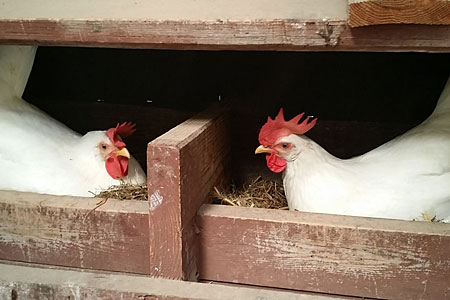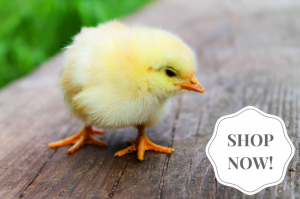
The general recommendation regarding the right height for chicken nests is 18 to 20 inches above the floor. But that’s not a hard and fast rule. The proper height depends on breed and age, and the hens’ ability to access the nests.
Importance of Nest Height
Nest boxes must be easy for the hens to access. They should be low enough so the hens don’t injure themselves when jumping down. But the nests should be high enough to keep chickens from resting or playing in them, which helps keep eggs clean and unbroken.
You also want to avoid having chickens sleep in nests overnight. As you know, from witnessing the amount of poop beneath the roosts, that chickens poop a lot while they sleep. If they sleep in the nest boxes, they will contaminate the nesting material. That means eggs will become contaminated with bacteria.
When figuring the right height for chicken nests, take into account how deep your coop litter is. If you use deep litter and don’t account for its depth, your nests might end up being too low.
Nests Too Low
Supposedly if nest boxes are lower than perches, at night chickens will sleep on the perches instead of in the nests. But that doesn’t always happen, especially when chickens are young. And when young chickens pile into nests at night, some may be crushed or smothered.
Also when nests are too low, chickens are more likely to use them for activities other than laying, such as napping or scratching in the nesting material. The result is contaminated nests and broken eggs.
Plus too-low nests are easier for egg predators to access. On the other hand, some egg predators — such as snakes — can reach the nests no matter what height they are.
Nests Too High
Nests that are higher than usual can be easier on the person collecting eggs, especially if that person has a bad back. Another advantage to high nests is more floor space underneath for normal chicken activities.
Flying up into high nests may pose no problem for the smaller and more agile breeds, especially if you provide a landing perch. And they can fly back down without hitting the floor with a thud.
But heavy breeds may have trouble getting up there. And they may injure themselves jumping back down. Silkies, because they don’t fly well, also have trouble accessing high nests.
Mitigating features include providing a ramp or ladder to access high nests, and having deep, soft litter to land in. However, if hens resist using nests that are uncomfortably high, they may end up laying eggs on the floor.
The Right Height
Instead of trying to achieve the right height for chicken nests, you might provide nests at different heights. For instance, you might stack them so the bottom ones are lower to the floor and the upper ones are higher. That way your hens have a choice. Depending on how many nest boxes you need, that’s also a good way to maximize coop space.
Nest location is also important. Nests should be in an area of least activity. For instance, they should be away from the pophole, where chickens constantly move in an out. Nest boxes also should be in a less well lighted part of the coop. Hens are more active in brighter light, but seek out darkened areas in which to lay.
Nest Sleepers
To keep chickens from sleeping in the nests, make sure they have plenty of roosts to sleep on. That way no chicken will be compelled to use a nest as a sleeping place. Further, having roosts at different heights allows chickens to reach whatever height makes them feel most comfortable.
Some chickens persist in sleeping in nests, no matter what you do. Repeatedly removing young hens that sleep in nests and placing them on the roost often works to teach them where to sleep. But the older they get, the less likely they will learn.
Closing nest openings in the evening is the best solution for keeping chickens out overnight. A nest can be closed easily with a hinged panel of plywood or woven wire.
For young pullets that haven’t yet started laying, simply stapling cardboard over the openings will do the trick. Just be sure to uncover the nest openings as the pullets reach laying age. They need to learn where to deposit their eggs when the time comes.
And that’s today’s news from the Cackle Coop.
Gail Damerow has written several books about keeping poultry, many of them available from the Cackle Bookstore.

